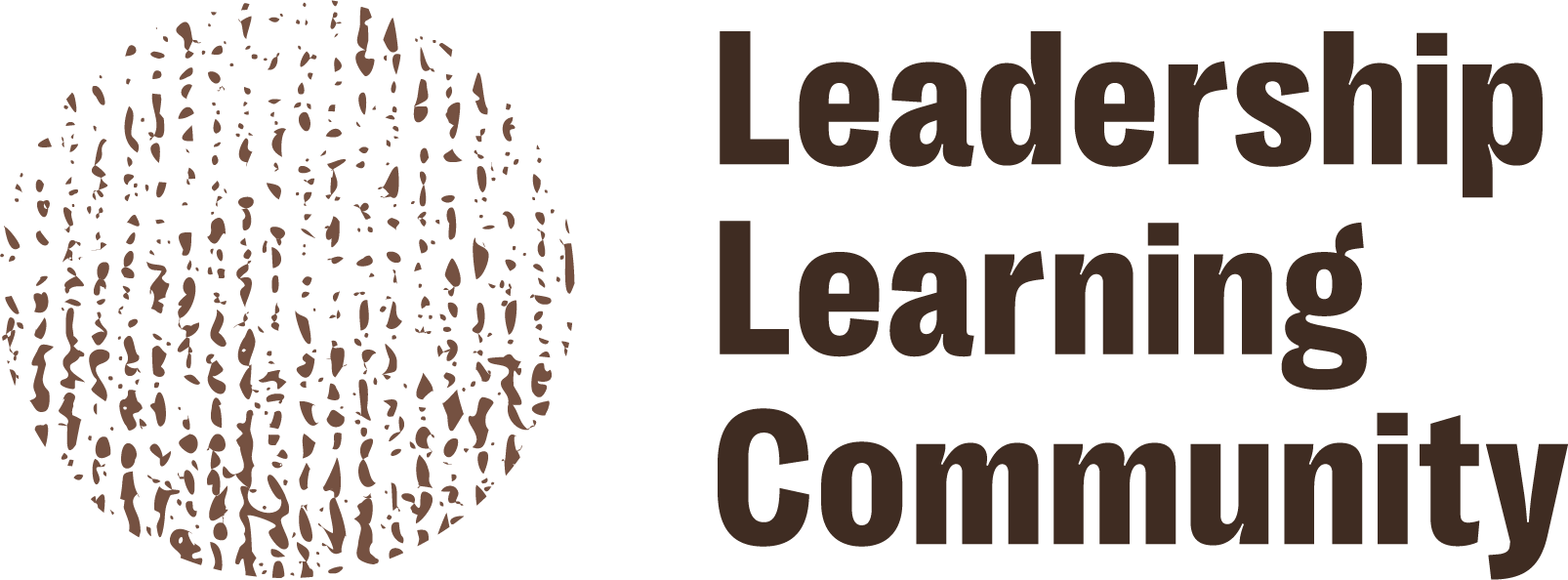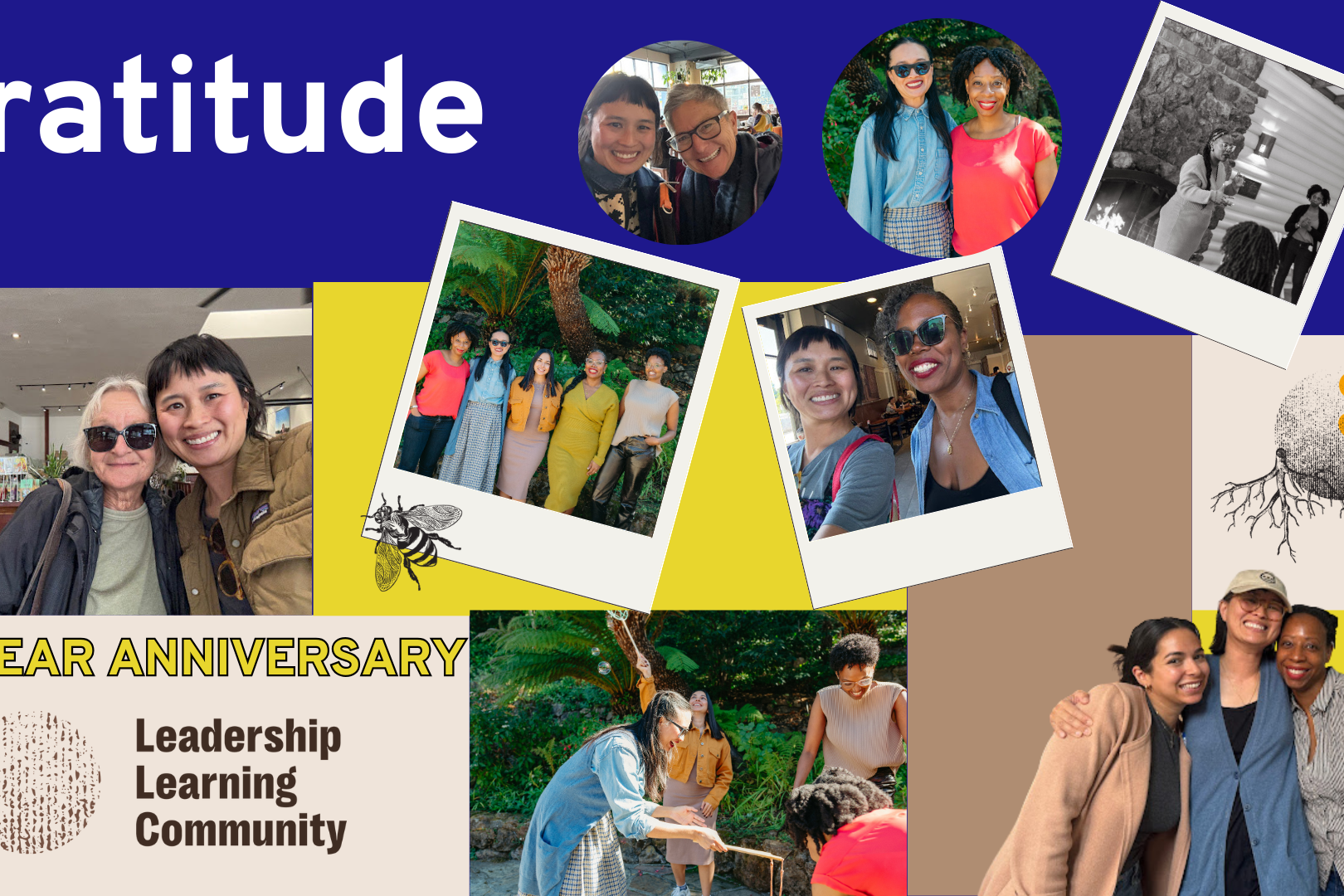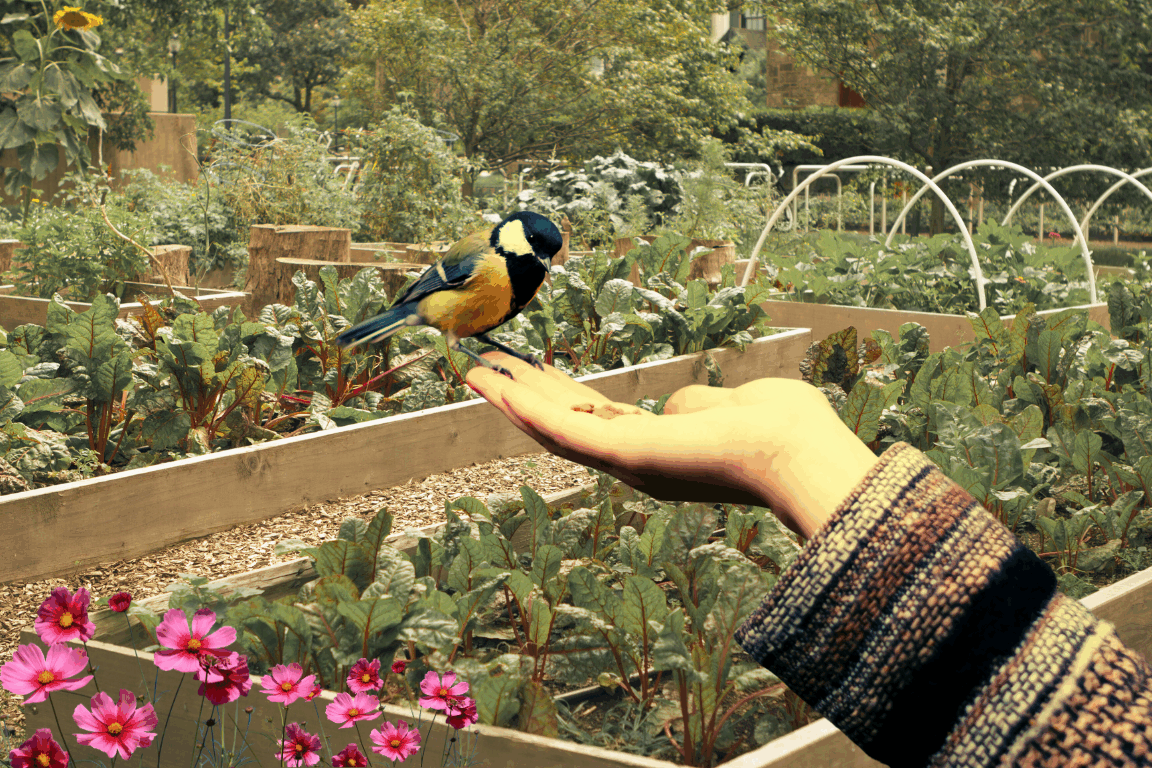Editor’s Note: While there are many ways one can describe liberation, in its simplest terms, liberation is the experience of wholeness, freedom, justice, and thriving. Liberatory leadership invites leaders to operationalize this vision of personal and collective freedom, justice, and thriving through their individual approaches and through their organizations. It necessitates an internal interrogation of how race, gender, and power interact with our work. As part of the Liberatory Leadership Partnership, we are exploring what supports and what gets in the way of living out these compelling visions and identifying promising practices that we can try on to right the balance.
In this inaugural liberatory leadership learning series, Trish Adobea Tchume of The Robert Sterling Clark Foundation, Ericka Stallings of Leadership Learning Community, and Ananda Valenzuela of RVC – three leaders committed to embodying and promoting liberatory leadership practice in their organizations and in the broader field – share reflections on what this approach looks like in practice, especially when things get hard. Trish kicks us off with this post today.
I was hired by the Robert Sterling Clark Foundation in early 2020, primarily to bring my skills as a network organizer, facilitator, and racial justice practitioner to the Sterling Network NYC. In addition to this important role, I requested time from the foundation to explore a question I was carrying from my most recent role as director of leadership development for a national organizing group: How can we structure organizations in a way that allows for leaders of color and their most liberatory visions to thrive?
This was a persistent question for so many leaders, particularly women of color, who I encountered through the leadership programs I had previously developed and facilitated. These were women who were often running well-established, local power-building organizations, many of which had been founded or run by white men. But questions about individual, organizational, and vision alignment were also alive for the nascent Black-led groups emerging from the first wave of the Movement for Black Lives that I had the opportunity to consult with in 2016 and 2017. It seemed that whether organizations were well-established and transitioning leadership or just starting to take form, this question of how to operationalize our values in our organizations and create spaces to support visionary leadership was a core question for everyone.
So I was grateful for the opportunity to dive more deeply into this question from a new perspective with the Robert Sterling Clark Foundation. As I began my exploration, though, I was reminded of the wisdom shared with me by my friend, healing and somatic practitioner, Holiday Simmons, who introduced me to the concept of social location – essentially the practice of acknowledging who we are in a given context. I, for example, am a Black, able-bodied cis-gendered woman who has a background and passion for organizational development and capacity-strengthening, But for the first time in my life, as I set out to support leaders and their organizations, I was seated at a grant-making foundation. As I moved into this exploration, how would this access to resources shift my relationship with potential partners who were longtime colleagues, co-conspirators and friends? What role would I need to play in bridging our foundation’s current thinking about funding leadership development to Black-led movement spaces? I wasn’t clear at the outset but I knew if I wanted to continue to move in alignment with my values around living liberation, I had to approach with a much deeper level of intention.
What follows are three lessons-learned (so far) around how funders can support liberatory leadership:
To support liberatory leadership, we need to fund Black imagination.
In her book, We Do This ‘Til We Free Us, abolitionist/scholar/activist Mariame Kaba reminds us that, “Our imagination of what a different world can be is limited because we are deeply entangled in the very systems we are organizing to change.” Nowhere is this more true than in the field of philanthropy.
My original vision for exploring this question around liberatory organizations, for example, was to fund participation in a series of listening sessions amongst the women of color and movement group leaders who had called my attention to this issue, and use the feedback to develop an issue-framing report to be shared with the field. Fortunately, the first person I reached out to explore this idea was Chinyere Tutashinda, Executive Director of BlackOUT Collective & Ruckus Society with whom I had developed a relationship years prior during my time as an organizational development consultant. Chinyere listened thoughtfully to my proposal and responded, “You know, when we were starting BlackOUT, I was being offered all sorts of cohort programs for my individual leadership development. But what I was really dreaming about was a cohort program focused on the nuts and bolts of structuring and running radical organizations. We’ve been wanting to test that out with an actual group of 3-5 year old, Black-led organizations. That’s what you should be funding.”
As a facilitator and organizer, my mode had always been to learn by doing and to trust the process. But in just a few short months working within a foundation, I had already defaulted to studying the problem rather than engaging with it directly. Chinyere was calling my attention back to what Dax-Devlon Ross named in his recent Nonprofit Quarterly article, Resistance and Radical Love: The Call-Forward of a Pro-Black Sector – that no one knows better how to build freedom within our current systems of oppression than Black and other marginalized people. Our very ability to design ways to survive and thrive within current structures should be all the proof of concept philanthropy needs.
The Liberatory Leadership Praxis Cohort, which we funded in place of listening sessions, is a perfect example of this. Chinyere’s dream, birthed into being by Kharyshi Wiginton and so many other brilliant Black women, had an immediate, transformative impact on the 10 emerging Black-led organizations who participated in the year-long cohort. The groups from across the country represented the vast spectrum of approaches necessary for Black and collective liberation – from food justice to art and storytelling to grassroots organizing – but shared the common experience of wanting to build organizations that could in and of themselves be spaces for practicing that liberation. Early data from the conclusion of the first program shows that for all of the organizations, the access to the values aligned coaches and colleagues, the liberatory organizational frameworks models they were introduced to, and particularly the substantial, unrestricted subgrant they received as part of the program (each group received $30K) has been a critical turning point in the depth and thriving of their organizations. Many also reported that, in their experience, access to supports like this are incredibly rare.
To support liberatory leadership, we must fund it unrestricted and over many years.
Liberation is not a destination, it is an experience we move through over and over and over again through practice. We heard resoundingly from the Praxis cohort and hear consistently from our grant partners that specific organizational capacity strengthening areas may be emergent, but the need to focus on the internal health of organizations is constant. So if we want to support visionary leadership, funding for organizational development must be flexible yet dependable. In other words, funders need to shift from thinking of capacity building as a series of projects and fund it more as a pillar of organizational life.
Another of our grant partners, Seattle’s Rooted in Vibrant Communities, which continues to shape and push the sector, thoroughly expands upon this point in its recent SSIR article. As a fiscal sponsor to dozens of BIPOC-led organizations and an intermediary focused on building equity, RVC is keenly aware of the layers and depth of work necessary for organizations to commit to the transformational capacity building necessary for them to do their work in communities with integrity. So their call to funders who truly want to support BIPOC communities is clear: Funders quite simply need to provide multi-year, unrestricted, direct, and flexible funding for persistent capacity building efforts.
This call to action is consistent across the field. Two of the top recommendations in Malkia Devich Cyril’s Philanthropic Initiative for Racial Equity report, Mismatched: Philanthropy’s Response to the Call for Racial Justice, call for funders to not only devote more resources to racial equity and racial justice but for that funding to be sustained “by establishing long-term horizons and giving multiyear general operating support for racial justice groups.” These recommendations echo the calls-to-action of groups like the BIPOC ED Coalition and are also an extension of the approach of trust-based philanthropy, which holds multi-year grants as a principle for organizations to build self-determination and dive more deeply into their work. To be clear, the groups and the reports named here are part of a decades-long lineage of organizations putting out this call. Sector-wide responses from funders to these recommendations are long past due.
To support liberatory leadership, we must imagine and experiment with new collective structures.
Frameworks from transformative organizing to abolitionist theory remind us that societal transformation is not possible without personal and interpersonal transformation. From my position within a foundation, I had imagined only as far as my ability to resource leaders for their time and wisdom and disseminate recommendations for future funding. The relationships built via one-on-ones with fellow practitioners about how best to shape the project, however, helped me see the deeper, more transformative opportunity available to all of us through this project. It was Ericka Stallings and Nikki Dinh of the Leadership Learning Community, for example, who first posed the question to me, “how can this process of exploration itself be liberatory?”
So as we began to move into our broader exploration of how organizations could operationalize liberatory vision, we asked ourselves: What is the opportunity here to reimagine the grantee/funder relationship? What is the opportunity here to reconsider power? How might we as a collective of Black femmes, model the sort of shared leadership and support we want to see in the sector?
We formed the Liberatory Leadership Partnership as a space to collectively practice amongst ourselves the sort of individual and organizational leadership that liberatory organizations will need to lean into. For us this has meant:
- Monthly deep-dive meetings and an in-person retreat to build relationships beyond our work and continuously align on values.
- Webinars, as well as virtual house parties that celebrate the wisdom of the wider ecosystem to which we belong.
- Anticipating conflict and leaning into it by collectively establishing a set of principles and practices that we can use to guide us back into alignment.
- Creating frameworks that elevate the lived experiences and shared wisdom of Black femmes to the level theory that can guide training and funding.
- Keeping our primary focus and the majority of our resources on field building and support. (In other words, we want the Liberatory Leadership Partnership to remain an accountability and re-alignment space for field-builders not another institution redirecting resources from the field!)
And for me personally, this has meant rooting myself in the knowledge that there is power within our collective spaces that goes far beyond funding. It also means recognizing, with humility and grace, that I come to this collective as a whole person with relationships, skills, culture, and experiences that contribute to the space beyond the financial resources of the foundation where I work.
Written by Trish Adobea Tchume. Be sure to read the other entries in this series: “When All Of Our Tools Are Weapons,” by Ericka Stallings, Co-Executive Director of the Leadership Learning Community, and “How to Tend to Your People AND Your Organization When Staff Struggle,” by Ananda Valenzuela, Capacity-Building Strategist at RVC & co-founder of the BIPOC Executive Director Coalition of Washington.
Related Posts
December 15, 2025
LLC’s 2025 Celebrations
July 21, 2025




